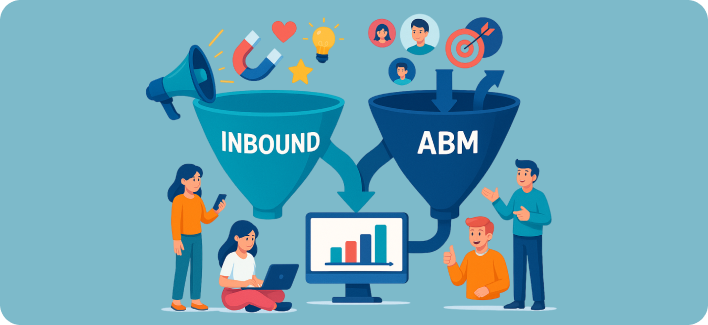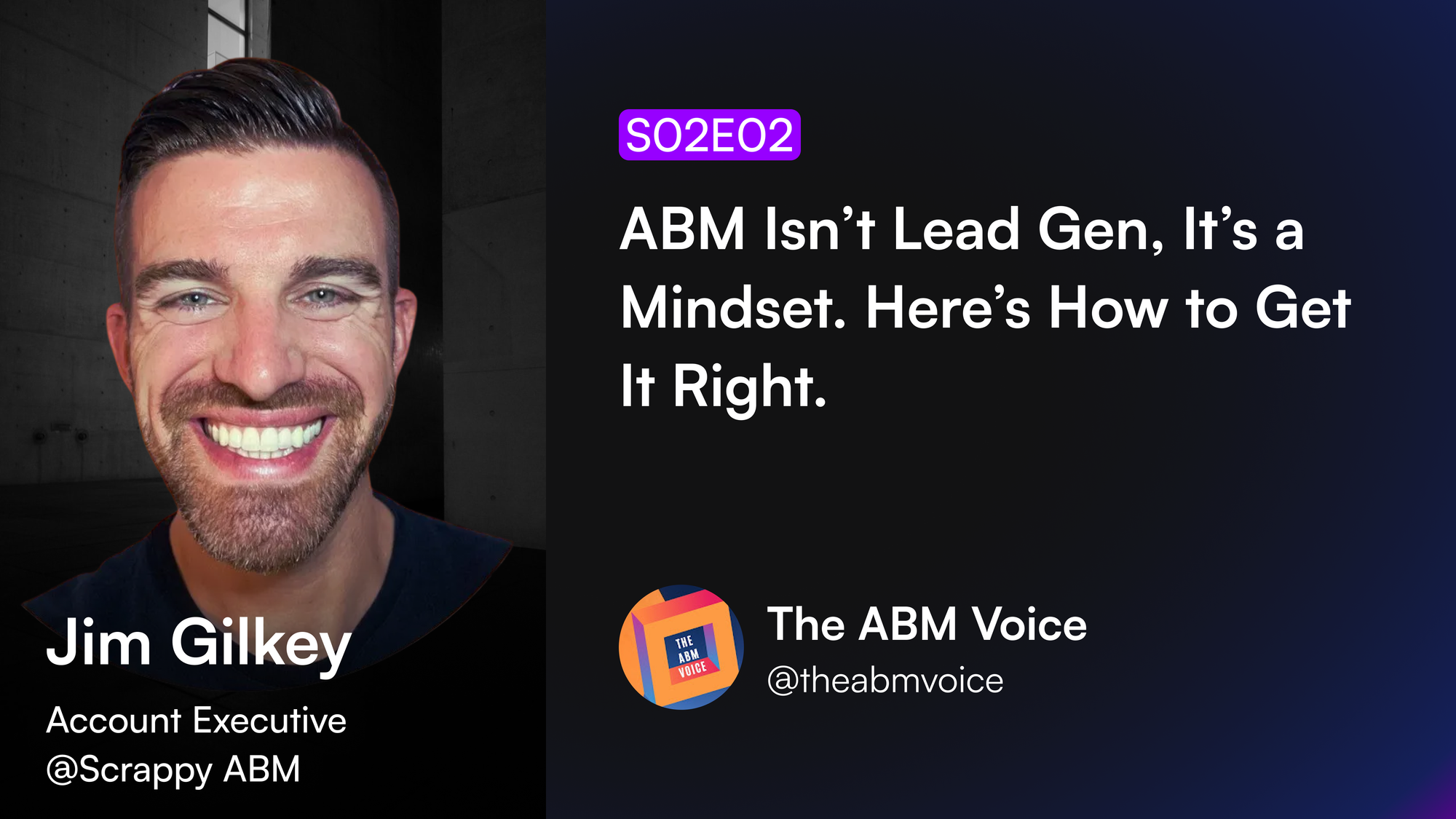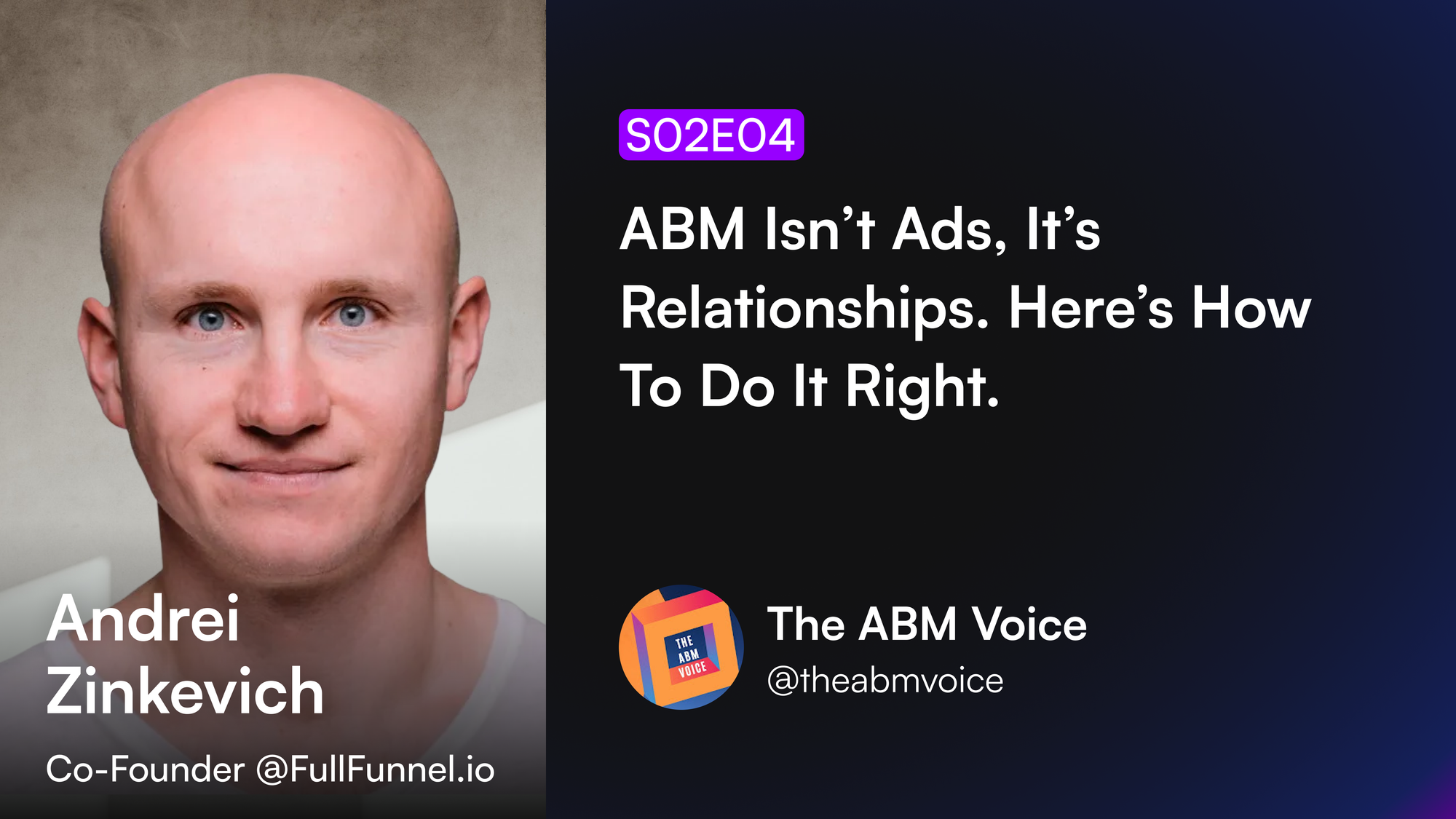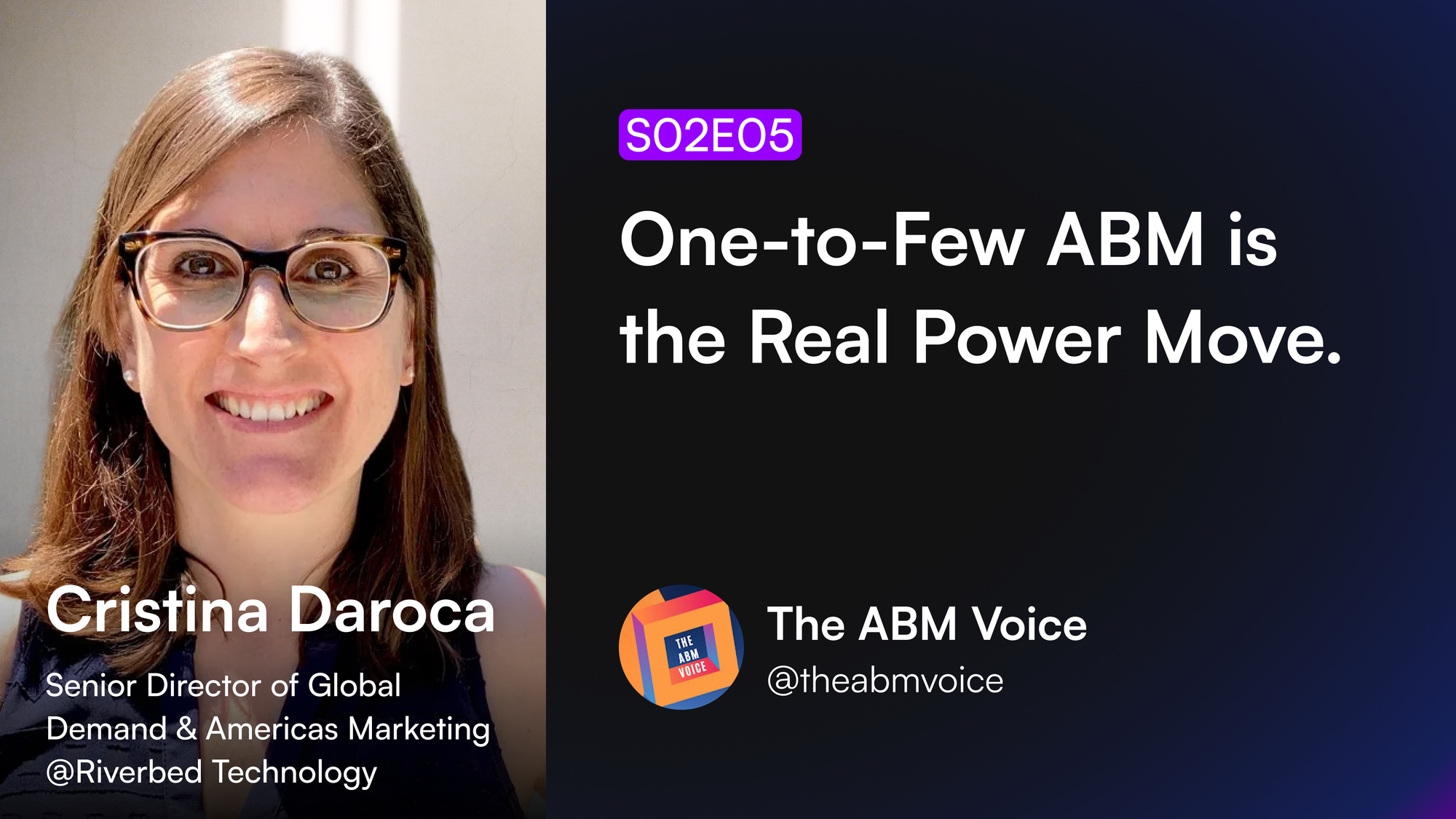B2B marketing has changed since the inception of Account-based-Marketing. According to Forrester, by 2025, the term ‘Account-based Marketing’ will evolve into ‘Account centric' which will become the way most B2B companies will identify, plan, manage, and measure buying and post-sale motions.
Marketing teams of the billion-dollar giants were the early adopters of ABM. They have invested heavily in their ABM processes and tools over the years. The practice just worked for them beautifully. Their business dynamics made them the best candidature for ABM practice - Long sales cycles, Large deal sizes, and Multiple decision-makers in the buying committees, and so forth. Since then, they have long come to realize that the notion of “Shoot in the dark and let’s see what works" is not the best way to build a sustainable GTM process for their organizations. And they wonder if they should continue to invest in their inbound marketing strategies. Or abandon it completely!
On the other hand, smaller firms are laggards when it comes to ABM adoption. They are aware that their current spray and pray practices are inefficient and it needs an urgent upgrade. The constant chatter on the benefits of ABM and the greater good it can unlock for their company is impossible for them to resist. And yet, they are unsure when to get started. And how to integrate ABM into their existing marketing processes. They live within a state of constant dichotomy, the Fear Of Missing Out and the risk of prematurely rocking the apple cart (the switch to ABM). The limited marketing spending and resources that they have at their disposal don't help their cause in decision-making.
Therefore, for marketing teams (big and small), it comes to one fundamental question, "Should I do away with Inbound marketing strategies and focus exclusively on ABM ?”
The answer is, Absolutely not! You need both.
Why do marketers feel inbound marketing strategies are ineffective?
The current inbound B2B marketing practices are siloed and have a generic approach, thereby attracting the wrong kind of Leads. With a wide array of digital touchpoints and each consisting of data silos, the insights are scattered all over the place, thanks to multiple native dashboard management and data collectors.
What's behind the inbound demand funnel?

Inbound Marketing primarily focuses on bringing in users/customers to your organization’s offerings. The inbound funnel has three stages, Attract, Engage, and Close. It enables the marketers to deliver value-based communication to each of these segments. Things get murky when the various digital touchpoints used in inbound marketing practices like Search Engine Optimization, Social Media Marketing, Digital, and offline branding, etc., create decentralization of insights.
- Marketers use Social Media and landing pages to work on engagement.
- The Sales team uses email campaigns for lead generation.
- Client Relationship Managers use automated content management systems for responses.
Since the touchpoints are scattered, the challenge lies in making the communications coherent and personalized across the different account segments.
What's behind the ABM funnel?

- Identify: Choose the best-fit accounts that match your company's Ideal Customer Profile definition.
- Engage: Reach and nurture those accounts using personalised and tailored content and nudge them towards conversion.
- Land and expand: Bring in new customers and identify opportunities to grow current accounts using various strategies such as cross-sell, upsell & retention - aka customer marketing.
ABM & Inbound - the coming together of the funnels
The usual misconception is that an ABM funnel and an Inbound funnel are polar opposites. ABM and Inbound marketing strategies are not mutually exclusive. In fact, they are better together. They complement rather than contradict. They are both sides of the same coin.

B2B marketers need both ABM and inbound demand gen marketing to have the highest impact possible. These two strategies come together to form a new funnel: the “dual funnel." The dual funnel refers to managing a high-volume demand gen funnel and a laser-focused account-based funnel. The two funnels work together to engage the target audience that displays a high intent and propensity to buy.
This dual funnel approach helps to identify target accounts and offer customized experiences via account-based tactics. In a mature ABM program, marketers review target accounts on an ongoing basis, retire underperforming Accounts and replace new high-intent Accounts from the inbound demand gen funnel as they are identified and qualified.
Conclusion
When the two processes are combined, Inbound marketing does the job of bringing leads. And Account-based Marketing focuses on personalizing and delivering one-on-one communications and engagements to the target accounts. Optimize your inbound marketing process to attract the best Leads possible across channels. Setup the ABM funnel to receive best-fit leads and use it for personalized and highly targeted marketing.
















